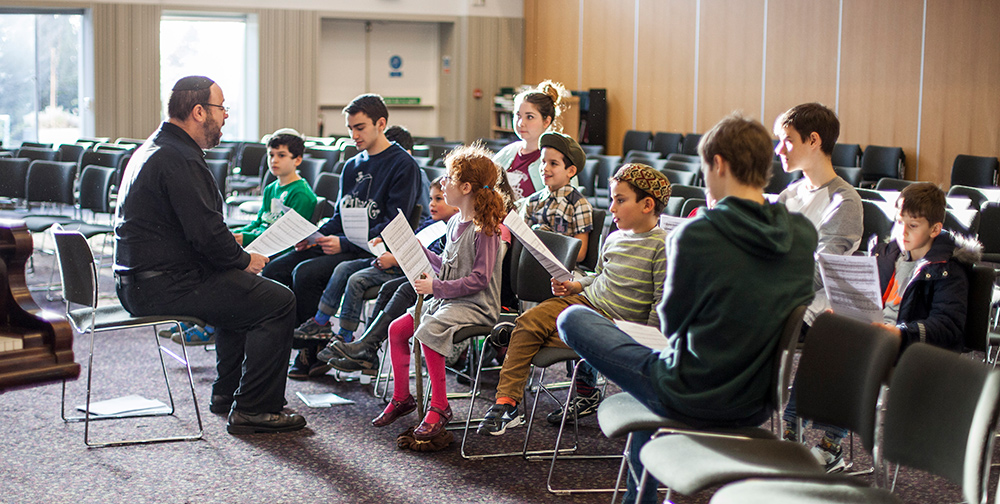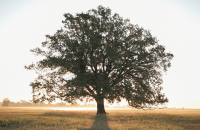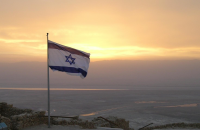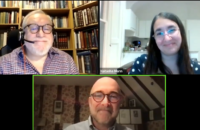Yom Hashoah 5776

Yom Hashoah was first established in Israel in 1951. The date and the full title, Yom Hashoah Vehagevurah, Holocaust and Herosim Day, were formally set in law by act of theKnesseton 19 August, 1953.
Around the world the date is generally known as Holocaust Memorial Day, or Yom Hashoah; the wordGevurahis widely omitted. This may be for no other cause than simplicity, or it may reflect a difference of attitude between the Israel of the 1950’s and the Diaspora. Whereas in the latter the focus was, and is, on the horror and destruction, in the young state, at war from its first day, there was a need to emphasise Jewish armed resistance. The very choice of date, on the anniversary of the Warsaw Ghetto Uprising, which in fact began on Erev Pesach 1943, reflects an identification with those Jews who fought back, rather than those who, in the phrase from Psalms so cruelly misapplied, allegedly ‘went like sheep to the slaughter’.
For a long time, I took little notice of the latter part of the day’s title. But it is also important to honourGevurah, which refers not only to physical resistance but also to inner resilience and resolve.
The very fact that there ever was a Warsaw Ghetto uprising is indicative of unimaginable courage. ‘But no, they did not scare us and we were not taken by surprise. We were only awaiting an opportune moment,’ wrote Marek Edelman, who commanded a Bundist unit in the revolt. (David Cesarani,Final Solution, p. 613). On the fifth day of fighting, 23 April, Mordechai Anielewicz wrote to Yitzhak Zuckerman: ‘The main thing is the dream of my life has come true. I’ve lived to see a Jewish defence in the Ghetto in all its greatness and glory.’ (Ibid, p. 615)
By the spring of 1943, the Ghetto had already been witness to many different forms of supreme courage and resilience. Janusz Korzak (who was not Jewish), head of the Jewish orphanage, had repeatedly refused the apparent offer of amnesty and a safe passage out of the Ghetto for himself. Rather, he led by the hand the children for whom he had cared for so long with desperate love and insight, and accompanied them on the train which carried them all to their deaths in Treblinka. When asked why he was forfeiting his own chance of safety, he explained that these children had already suffered the most appalling betrayals. He had no intention of abandoning them now.
Not far from where he had spent sleepless nights worrying how to provide at least a minimum of bread and warmth for those in his care, Kalonymus Kalman Shapira, known as the Rebbe of the Warsaw Ghetto, had been teaching Torah and burying his lecture notes in the hope that a future generation would find them if he himself were not to survive. His words reveal an extraordinary depth of inner resolution in endeavouring to bring faith to his followers and to offer them spiritual refuge, in what he denounced in a rare and terrible cry of pain as the worst cruelties ever suffered by the Jewish People in its long and often painful history. God could still be found, he taught; God was in the inner chambers, weeping. If one joined God there in one’s tears, one would at least not be weeping alone.
In May 1945, the war was over, but not the suffering. The post-war years brought their own forms of pain and demanded a further depth of resilience. For many survivors liberation meant not the joy of outliving their persecutors and returning home to their loved ones, but the realisation that neither home nor family existed any more. In his raw and powerful account,The Liberation of the Camps; the end of the Holocaust and its Aftermath, Dan Stone quotes a survivor: ‘Feeling of, yes, I’m alive, but that’s it. The rest doesn’t matter. No ambition. For what? For who? No initiative. If I am to stand, I’m standing. So I am standing. If you tell me to sit down, I’ll sit down.’ (p. 6)
Worst of all were the feelings of utter loss. Rarely has this been so desperately expressed as in Marceline Loridan-Ivens accountBut You Did Not Come Back, a heart-rending lament for the death of her father. Auschwitz, she writes, did not stop killing people after the ovens had grown cold. Her brother committed suicide; she tried to do the same. The rest of her family had ‘dealt with his sadness the way they did with my memories’¦our family became a place where you screamed for help but no one heard, not ever.’ (p. 66) Day by day the simple act of continuing to live in a world devoid of virtually everybody one had loved, and populated by those who either did not understand or were struggling to manage sufferings of their own, exacted an immense degree of tenacity and courage.
Surely it still does. One has to wonder what strength must be demanded now in the hearts and memories of those still alive today and what thoughts preoccupy them as they approach the close of their lives. We must also ask what we who did not live through such times may have to offer by way of companionship and solidarity to those who bore witness to the worst of all crimes ever to have been perpetrated on this earth.
Rabbi Jonathan Wittenberg is the Rabbi of New North London Synagogue and Senior Rabbi of Masorti Judaism.




